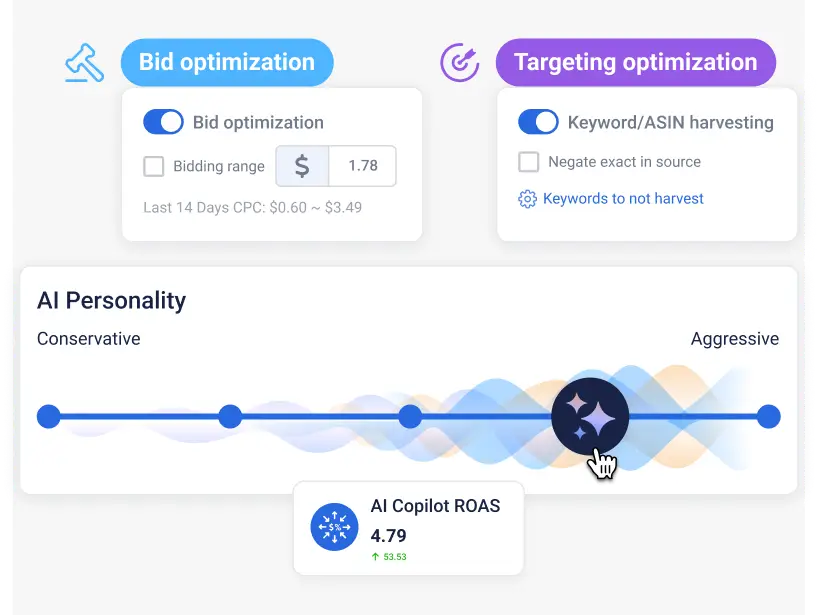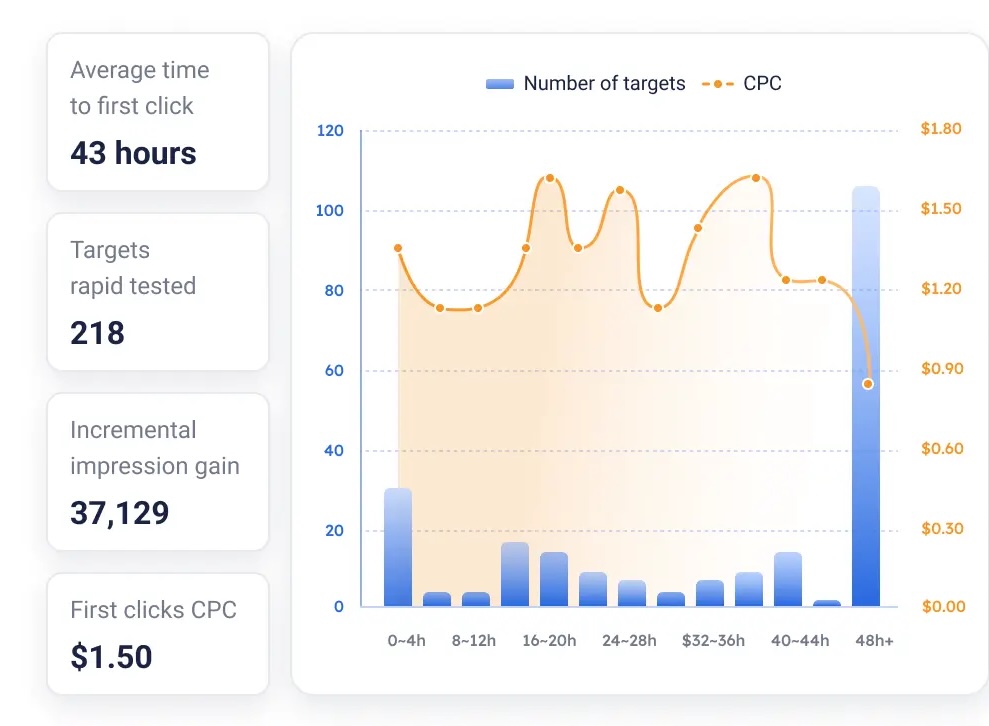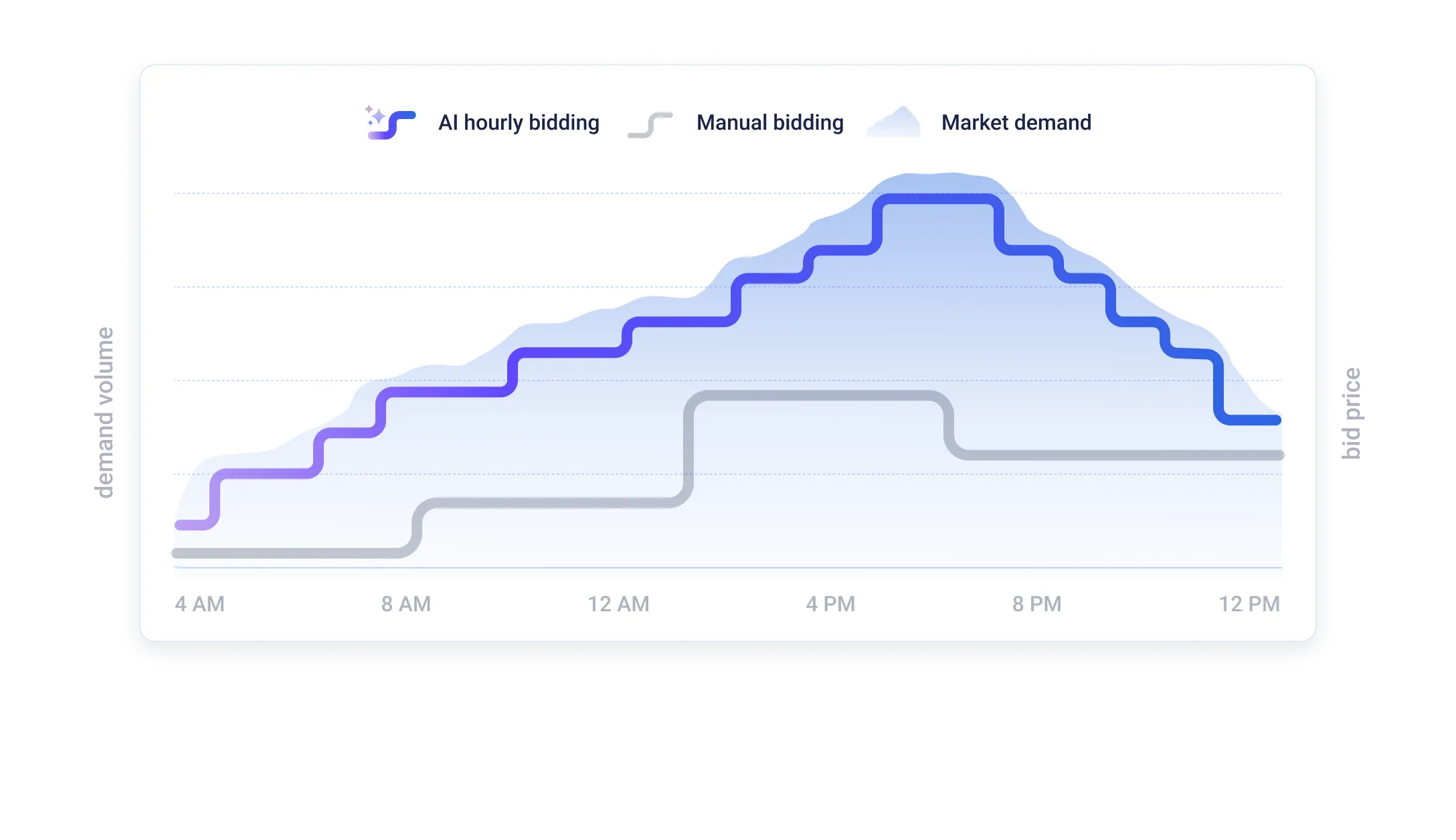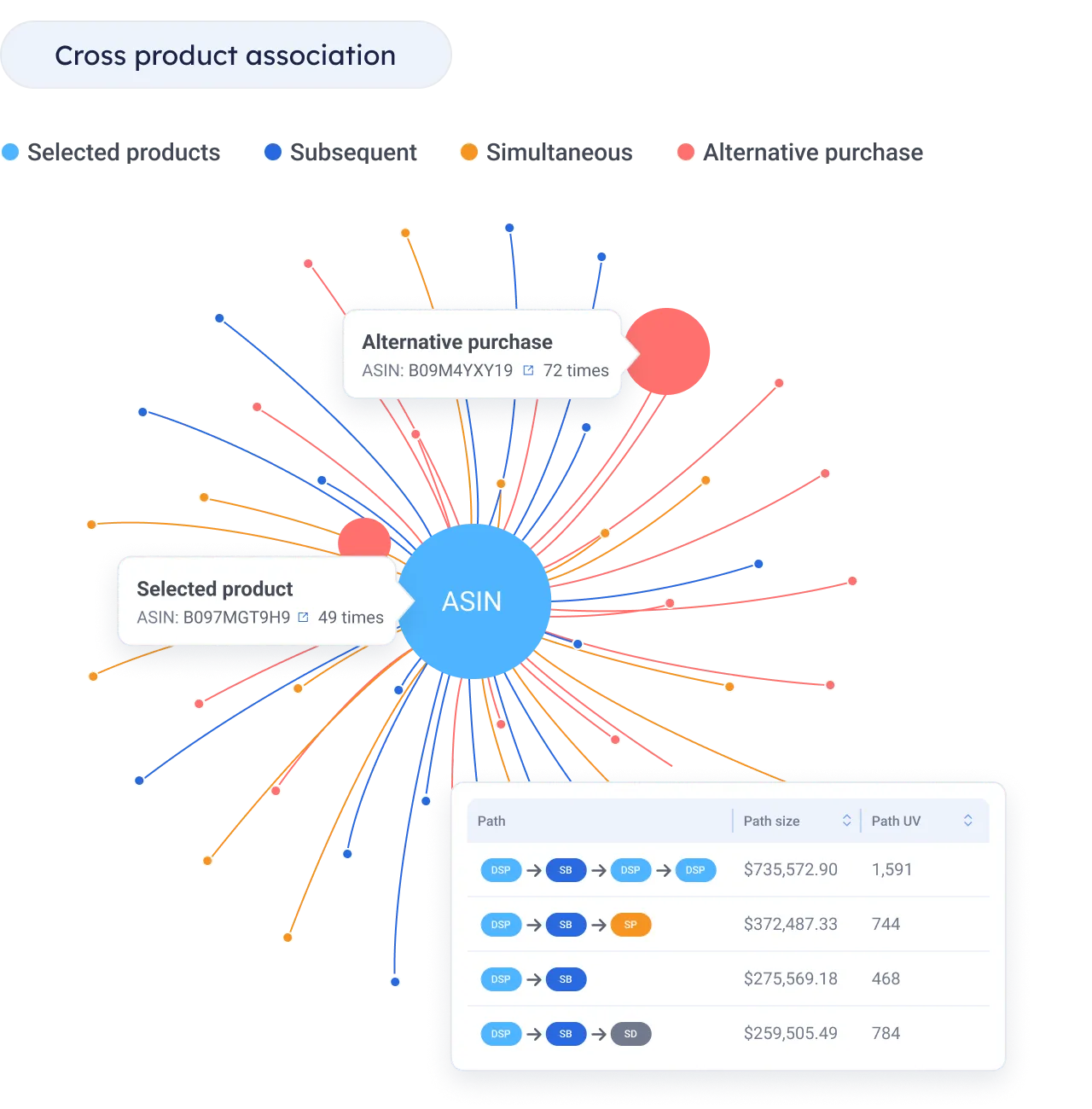Prime Big Deal Days 2025: What Worked, What Didn't, and How to Optimize for What's Next
Prime Big Deal Days 2025 presented clear challenges: influx of discount-focused traffic, competitive ASPs, and pressure on efficiency metrics. But these challenges revealed strategic opportunities for advertisers who approached the event with the right preparation and tools.
We analyzed performance across Xnurta accounts during PBDD to identify what separated strong performance from average results. The standout finding: our clients’ conversion rates improved 13% under competitive pressure. This wasn't luck. It came from tighter targeting during the event, focusing on retargeting pools, high-intent keywords, and proven audience segments. Post-event AMC analysis revealed exactly which targets drove this efficiency, giving us a clear blueprint for Black Friday and Cyber Monday.
PBDD sales didn’t quite match July Prime Day's volume. But it serves a different strategic purpose: a high-stakes testing environment that reveals what works under competitive pressure before the biggest shopping period of the year. Here's what we learned and how to apply it to BFCM.
Performance Data: What the Numbers Tell Us
We compared PBDD performance against the 30-day pre-event baseline across Xnurta advertisers. Here's what stood out:
+13% CVR improvement: Conversion rates improved despite intense competition because we tightened targeting to high-intent audiences during peak traffic. Post-event AMC analysis showed which specific keywords, products, and audience segments drove this efficiency. Retargeting pools, brand plus category keywords, and proven new-to-brand sources consistently outperformed broad discovery tactics during the event window.
+159% sales growth, +170% GMV: Strong revenue growth during the event came from tightening targeting to high-converting audiences and scaling proven performers. GMV (gross merchandise value, or total sales revenue before costs) grew substantially through strategic budget allocation toward what was working. For BFCM, the key is shifting budget faster toward proven converters using real-time optimization and AMC intelligence to identify and scale top performers.
Year-over-year, the most telling trend was adoption patterns: AI-managed profile count grew 71% with usage rates climbing 35%. This reflects advertiser recognition that competitive events demand optimization speed that manual management can't provide. The brands investing in AI heading into PBDD were better positioned to capture opportunities as they emerged throughout the two-day event.

How AI-Managed Campaigns Delivered Higher Efficiency
AI-managed campaigns spent 18% more than manual campaigns during PBDD but generated 22% higher GMV growth. That positive efficiency delta came from optimization speed and testing aggressiveness that manual management can't replicate.
Performance comparison:
- AI efficiency advantage: Spent 18% more, generated 22% more GMV
- CVR: +14% (AI) vs +12% (manual)
AI adjusted bids throughout the hour based on real-time Amazon Advertising data. When campaigns hit target ACOS but ran out of budget, AI automatically added budget to maximize performance. When significant performance differences emerged between campaigns, AI shifted budgets dynamically without waiting for manual review.
The testing approach differs fundamentally from rule-based automation. AI runs micro-tests with shorter iteration periods. It might increase a bid 25% when detecting a conversion spike, measure results within the hour, then adjust again based on actual performance. Rule-based automations can handle scheduled adjustments and basic thresholds, but they can't react to unexpected patterns or pivot quickly when conditions change.

AI also optimized budget allocation through dayparting, shifting spend to high-CVR windows throughout the day. It added negative keywords continuously to block irrelevant traffic and maintain cost-effective media spend.
During PBDD, this meant capturing search spikes that happened overnight, responding to competitor stockouts within hours, and identifying audience segments showing elevated intent on Day 2 that weren't converting Day 1. These micro-opportunities compounded into measurable performance differences over the two-day event.
Use AI to save time for what matters most. Discover how Rivrhub used Xnurta’s AI optimization to cut manual work and refocus on high-impact strategy.
Three PBDD Challenges to Prepare For During BFCM
Discount-focused traffic requires precision targeting and competitive awareness
Prime Big Deal Days floods the platform with discount-seeking shoppers. The challenge is ensuring your ads reach shoppers who will convert for your specific product and price point. If you're the lowest-priced option, you need to capture that traffic aggressively. If you're competing against lower-ASP alternatives with lower-funnel campaigns, imprecise targeting means wasting budget on bargain hunters who won't convert at your price.
The +13% CVR improvement during PBDD came from tightening targeting to high-intent audiences during the event. Post-event AMC analysis revealed exactly which audience segments, keywords, and products drove conversions under competitive pressure. Retargeting pools, proven new-to-brand sources, and high-intent behavioral segments consistently outperformed broad discovery tactics.
But precision targeting alone isn't enough during competitive events. Real-time competitive awareness matters too. The discount and ASP landscape shifts throughout the event as competitors launch deals, adjust pricing, or run out of inventory. Knowing where you have price advantage versus where you're competing against lower-cost options determines how aggressively to bid and which audience segments to prioritize.
For BFCM: Combine AMC-powered audience intelligence with competitive monitoring throughout the event. Build high-intent audiences based on PBDD behaviors before Black Friday, then monitor competitor pricing in real-time to adjust targeting and budget allocation as the competitive landscape shifts.
Basket-building requires product intelligence
Average order value faced pressure during PBDD across the market. The brands that maintained or grew basket sizes knew in advance which products customers were purchasing together.
This is where Cross-Product Association data from AMC becomes critical. The insight you need is understanding which ASINs customers bought in the same transaction during PBDD. In Xnurta's AMC Hub, you'd navigate to the Cross-Product Association model and filter for October 7-8, but regardless of your tool, you're identifying co-purchase patterns to inform which products to feature together in your BFCM creative and targeting.
Pull this data now. Your hero products for cross-selling shouldn't be assumptions, they should be proven purchase behaviors from October that you can replicate in November.
Continuous optimization captured opportunities manual management missed
The 22% GMV advantage AI-managed campaigns showed came down to optimization speed and adaptability. AI adjusted bids every 30-60 minutes, shifted budgets between campaigns showing performance differences, and automatically boosted budgets on campaigns hitting target ACOS.
Rule-based automations can handle some optimizations around the clock: budget pacing, scheduled bid adjustments, basic thresholds. But they can't react to unexpected spikes or pivot when conditions change. High-converting search terms spiking at 11pm. Competitor stockouts creating opportunities at 6am. Audience segments showing elevated intent on Day 2 that weren't converting Day 1.

AI tests more aggressively and reverses faster when tests don't work. This speed of testing and iteration captured incremental opportunities throughout PBDD that compounded into measurable differences.
For BFCM: Whether using AI or rule-based automation, understand that event performance is highly dynamic. AI's advantage is pattern detection and real-time strategy adjustment, not just executing pre-defined rules.
Looking for more proven tentpole strategies? Discover how Channeled leveraged Xnurta to drive $2M in Sales during Prime Day 2025 through strategic campaign management.
Three AMC Analyses to Run Before Black Friday
Identify cross-sell opportunities to increase basket size
Pull Cross-Product Association data filtered for PBDD dates (October 7-8). Look for ASINs with high co-purchase rates, products customers bought together in the same transaction. In Xnurta's AMC Hub, navigate to the Cross-Product Association model and apply date filters. Regardless of your tool, you're looking for cross-product purchase patterns in your AMC data.

Build your BFCM strategy around top product pairs. Feature these combinations in Sponsored Display creative, set up campaigns targeting customers who bought Product A with messaging about Product B, and update Amazon Posts and A+ content to highlight proven pairings.
Find your most efficient new-to-brand sources
Identify which keywords and campaigns drove the lowest customer acquisition cost for new-to-brand customers during PBDD while maintaining meaningful volume. In Xnurta's AMC Hub, use the New-to-Brand Analysis model filtered for PBDD dates and sort by NTB customer acquisition cost. The key is balancing efficiency with scale. A keyword with the lowest CAC that only drove two sales isn't a priority. Look for keywords in the top quartile for both NTB efficiency and total sales or traffic volume.
These become your BFCM budget priorities. Create dedicated campaigns for top performers with 25-30% higher bids than standard keywords.
Build high-intent retargeting audiences from PBDD behavior
Create custom audiences based on specific PBDD behaviors:
- Cart abandoners: Added to cart during October 7-8, no purchase in same period. Strongest intent, hesitated at checkout. Use for Sponsored Products remarketing.
- High-intent multi-engagers: Two or more behaviors during PBDD (viewed plus added to cart, or searched plus clicked), no purchase. Strong signals where indecision blocked conversion. Use for both Sponsored Ads and DSP.
- Potential repeat purchasers: Ordered during PBDD with lookback window based on typical repurchase cycle. Use Customer Lifetime Value and Time to Conversion AMC data to determine timing. Use for proven remarketing timing.
- DSP-exposed audiences: Shoppers who viewed your DSP ads during PBDD but didn't purchase. These audiences have brand awareness and convert at higher rates during promotional events. Lead-up advertising launched 10-14 days before an event builds your retargeting pool by exposing new shoppers to your brand. When these shoppers return during the event, they're warm audiences primed for conversion.
In Xnurta's AMC Hub, build these through custom audience creation with conversion event filters. Regardless of your tool, segment PBDD shoppers by behavior and purchase status to create warm retargeting pools for BFCM.
The Playbook: Turning PBDD Learnings into Q4 Wins
This week:
- Run AMC analyses: Execute cross-product analysis, NTB source identification, and audience building now while PBDD data is fresh. Waiting until the week before BFCM leaves no time to test and refine.
- Audit PBDD performance: Pull campaign performance reports sorted by CVR and new-to-brand rate. Campaigns in the top quartile for both metrics are your BFCM budget priorities. Plan 50-100% budget increases on these campaigns as you begin ramping up spend for BFCM.
- Identify high-ROI targets based on traffic quality and conversion performance: Pull PBDD performance data to find keywords and ASINs that drove strong returns. Look specifically for competitive category keywords that showed higher-than-expected CVR, indicating market share opportunities where the data shows your product resonates with shoppers.
- Plan your lead-in advertising strategy to prime shoppers before BFCM: Invest in DSP awareness campaigns 3-6 weeks before Black Friday to build brand familiarity and expand your retargeting pool with DSP-exposed audiences you can activate through AMC during the event. Focus budget on upper-funnel awareness early, then shift toward consideration and conversion tactics as BFCM approaches. This phased strategy ensures you're capturing shoppers throughout their journey rather than competing purely on price during peak days.
PBDD revealed that execution quality matters more than budget size during competitive events. Speed, precision, and preparation determine market share capture. BFCM is your opportunity to apply these lessons.
What Next?
The difference between strong PBDD performance and average results came down to three factors: AI-powered optimization that adjusted strategies every 30-60 minutes, AMC intelligence that identified high-value audiences and products, and strategic preparation that defined priorities before competitive pressure hit. These same principles apply to BFCM, where the stakes are higher and the windows for optimization are shorter.
Optimizing Amazon advertising performance during peak events requires speed, precision, and the right tools. Xnurta's AI-powered platform handles real-time bid adjustments, budget allocation, and continuous testing across Sponsored Ads and DSP campaigns. Our AMC Hub provides no-code access to advanced analytics like Cross-Product Association, New-to-Brand Analysis, and custom audience creation, turning complex data into actionable strategies. AI optimization, AMC intelligence, and expert support help advertisers maximize performance during tentpole events and beyond. Ready to see how it works? Explore our award-winning solutions or book a demo to speak with our team.



.png)






